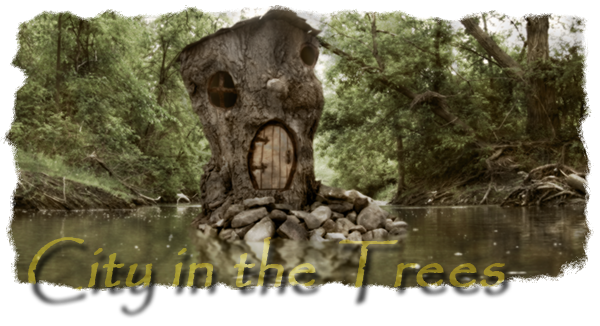This Saturday just past was one of a couple of appointments with an awkward block of free time suspended between those dependencies. I had an appointment with my dental hygienists at one end and a meeting with a friend at the Duke of Kent pub at the other. Between the two was a gap of three or four hours, depending on who got where when. I'd been meaning to go to the Toronto Reference Library for a long time now, mainly to see if I could look up some of the originals James V. Salmon snapped, and that seemed like my opening to spend a few hours doing so.
The dental appointment was in East York on the lip of the Don Valley. I started wondering how I'd get to the TRL. I figured back on the DVP, up to the 401, and down Yonge or some less-travelled parallel street. Then in looking at the map, I realized I could just about see the TRL across the valley from where I was. It was a lot simpler to just drive down Broadview, cross the valley on Bloor, turn up Sherbourne and start hunting for a place to park in toney Rosedale. Ultimately I opted for Cluny Avenue, and decided to cross to Yonge by a footpath down from the heights (and then back up some stairs again, duh). But I wanted to make the trek anyway. The path in question is runs between Cluny Crescent and the cul-de-sac end of Rosedale Valley Road beside Aylmer Avenue, and I'm not sure, but I think it might once, and not too long ago, have been part of Rosedale Valley Road running up to Cluny. Anyway, it makes for some interesting shots.
At the TRL itself, I eventually found the reference cards for the James V. Salmon collection in a quiet, segregated room on the 4th floor. The librarian there tried to be helpful but strangely, she had no idea where the original photographs reference on the cards were stored, or even if they were the property of the library! She did promise to have someone more knowledgeable about the collection get in touch with me. In the meantime, I did spend a couple of interesting hours going through the cards. A lot of it's been digitized and is already available online, but I'm convinced I saw a few interesting things I'd never seen before. One thing I noticed, now that I've taken the time to actually look, is that James Salmon had a deep interest in, and real knack for locating, old TTC streetcars that had been retired from service and put to other uses. It would seem that in the 1950s, southern Ontario was utterly dotted with streetcars in farmers' fields, or being used as restaurants, or as additions to homes, or the basis for cottages... almost anything you can think of, someone took a streetcar and turned it into that. This has largely gone by the boards in the last few decades, which makes it all the more interesting now. But of the collection, I can say this... I believe I saw six iron boxes of photo reference cards, and fully three of them are taken up with James V. Salmon's collection. Not surprising, because he seems to have shot and shot and shot! Flipping though his images for spring, 1952, it seemed like hardly a day went by that he didn’t shoot a half a dozen subjects. The last image in the entire collection, if they're strictly chronological, is dated April 18, 1958, which is seven months to the day before he died. It was hard to look at that imagine and wonder, was this his last good day? Was this the last carefree moment before he got the news and his world and priorities turned around? But I suppose the focus should be on the joy his range of images does give me, the chance to see what was and is no longer, and the gratitude that stirs in me.
N.B. (Thursday, Nov. 26th) Forgot to mention this, though I meant to... Going through Salmon's collection, I noticed that one of the things he documented was the removal and subsequent replacement of the Sherbourne bridge north of Bloor Street. That resonated with me when I saw it that day because I'd just driven across it an hour or so earlier. What a strange thing to see the simple, shaky-looking lumber-and-bailing wire bridge that was there before, then being pulled down, then the empty gap there, and at last, a year later, the current bridge taking its place. This impressed me. James Salmon must have known the bridge was about to be torn down. He got in there and patiently took the before, during, and after shots. Probably nobody else did that, not even the photographers on site to provide the city the building proofs. End to end, he covered it, for us. That's a real inspiration to me. We now return you to your regular blog entry...
N.B. (Thursday, Nov. 26th) Forgot to mention this, though I meant to... Going through Salmon's collection, I noticed that one of the things he documented was the removal and subsequent replacement of the Sherbourne bridge north of Bloor Street. That resonated with me when I saw it that day because I'd just driven across it an hour or so earlier. What a strange thing to see the simple, shaky-looking lumber-and-bailing wire bridge that was there before, then being pulled down, then the empty gap there, and at last, a year later, the current bridge taking its place. This impressed me. James Salmon must have known the bridge was about to be torn down. He got in there and patiently took the before, during, and after shots. Probably nobody else did that, not even the photographers on site to provide the city the building proofs. End to end, he covered it, for us. That's a real inspiration to me. We now return you to your regular blog entry...
On my way out, I took a wrong turn, and found myself wandering towards the TRL's used book store. I couldn't resist. I spent about half an hour in there. It's a tiny little room that could barely contain the two volunteers and half a dozen browsers inside it at any given time, but apparently it's moving. I found a book called Eastern Europe that presents arguments and counter arguments about the collapse of communism and what it would mean for the future, as the book was published in 1990, right in the middle of things: the Berlin Wall had come down, but German reunification hadn't been accomplished yet, the Soviet Union still existed, and most of the governments in the east were in the process of feeling their way forward. The opinions on a range of matters, trends in history, and forecasts for the future, are remarkable... they're all over the place. With two decades of hindsight it's easy to see who had it right and who was scaremongering, but often there's kernel of truth in both views. I just glanced at it while waiting for my friend at the Duke of Kent, so I'm looking forward to what should be a fascinating read. While waiting, I read Vaclav Havel's address to the US Congress a couple of months after he became president of Czechoslovakia (back when there still was a Czechoslovakia), which came only a couple of months after his last arrest! The speed with which things changed is what's so astounding.
Sunday I decided to get out and do something I've been planning to do since P-Doug found the requisite information: visit the resting place of James Salmon. He's buried in Glendale Memorial Gardens at the northwest corner of Albion Road and Hwy 27. Back in 1958, I imagine it was utterly rural and surrounded by nothing but farmland. Today, it's at the edge of suburbia and light industry. Nothing around the place towers over it, but I imagine that's bound to change as the city grows into the northwest of Rexdale and southwest of Vaughan. It was a really strange thing to finally be separated from James Salmon by only about six feet or so physically, but a half a century in time... and that was the dimension that trumped, of course. I'd give a lot to be able to talk to him. But at least he left us what he saw, and he was dutiful enough to record it instead of just see it. Buried with him is his wife, Jean, to whom I believe our gratitude is due for having donated his collection to the city. I took a few photos of their resting place, and of its current surroundings, and one holding up a photo he took at Bayview and Eglinton in the early 50s, not far from their home. For what it's worth, I made a point of saying thank you. If the gesture did no one else any good, living or dead, at least it mattered to me.














No comments:
Post a Comment